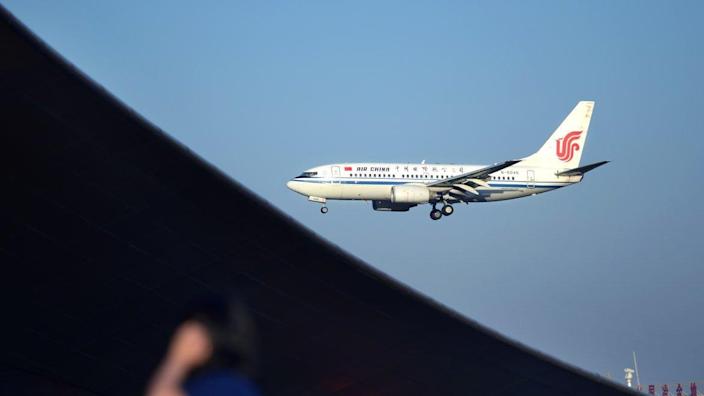
Aviation experts are baffled by data showing that a China Eastern Boeing 737-800 about to descend into the city of Guangzhou suddenly plunged vertically to Earth like a rocket, killing 123 passengers and nine crew members on Monday.
This horrific disaster, the worst in recent Chinese aviation history, highlights that the kind of data that used to take researchers at least days to collect is now immediately available through open source tracking sites like FlightRadar. As a result, speculation about the cause of a crash instantly sparks a Twitter storm as pilots and technical experts try to interpret what they’re looking at.
Boeing 737 crashed at 350 MPH in moments before crash in China with 132 on board
In this case, there is a striking consensus that something very unusual has happened that is not directly related to previous disasters involving this version of the 737, one of the most widely flown jets in the world, which predated the 737-MAX version that almost two years after two catastrophic accidents.
The flight pattern revealed by the radar shows the aircraft flying over mountainous terrain at 29,100 feet as the crew was about to prepare for descent, when the nose dropped abruptly and it started to dive. began. As it approached the site, it seemed to pick up for a moment, then resumed the dive to hit with tremendous force.
The only certain details are what didn’t happen: There was no indication of an engine fire and no sign of much of the plane breaking down. Significantly, there was no time for the crew to send a Mayday distress call.
There have been several instances where various models of the 737 undergo an explosive decompression, when part of the fuselage structure, weakened by undetected cracks in the outer skin, suddenly ruptures and the air in the pressurized cabin is released in an explosion, but even with that damage allowed pilots to get the plane down safely, even with parts of the cabin open to the sky.
But those events happened early in the flights, when the planes reached cruising altitude, not as in this case at the end of the cruise and at the beginning of the approach to the airport.
An aerospace engineer commenting on the Aviation Herald site, says: “It’s not normal for a plane to dive into the ground with a nose, it rules out a lot of failures.” Another says: “For those who can’t think of any reason…there are many. Some repetitions of things that have already happened, maybe something that has never happened before. Such is aviation.”
The Machiavellian Reason Why China Pressures Boeing
There was a case involving a similar dive: in 1997, when an earlier model 737 from Silk Air crashed into a river in Sumatra in Sumatra, killing 104 people, prompting an investigation by the US National Transportation Safety Board to it concluded that the pilot deliberately caused the dive in an act of suicide, but this verdict was disputed by Indonesian regulators, who cited problems with the rudder controls that had caused other crashes of that model.
Another possibility is that, although no fracture was visible on the radar track, part of the horizontal stabilizer that was supposed to be activated to initiate the descent has broken off.
All this leads to one urgent task: to find an answer where it should be, in the black boxes of the plane. The crash site is accessible and teams go there. However, there is some concern that these flight data recorders may not survive such a devastating impact.
The Chinese regulators and researchers are highly regarded. China was the first country to ground the 737-Max and the last country to allow it to return to the air. Domestic air traffic in China has grown rapidly over the past decade, but very few accidents have occurred.
Read more at The Daily Beast.
Get the Daily Beast’s biggest scoops and scandals straight to your inbox. Sign up now.
Stay informed and get unlimited access to Daily Beast’s unparalleled reporting. Subscribe now.

